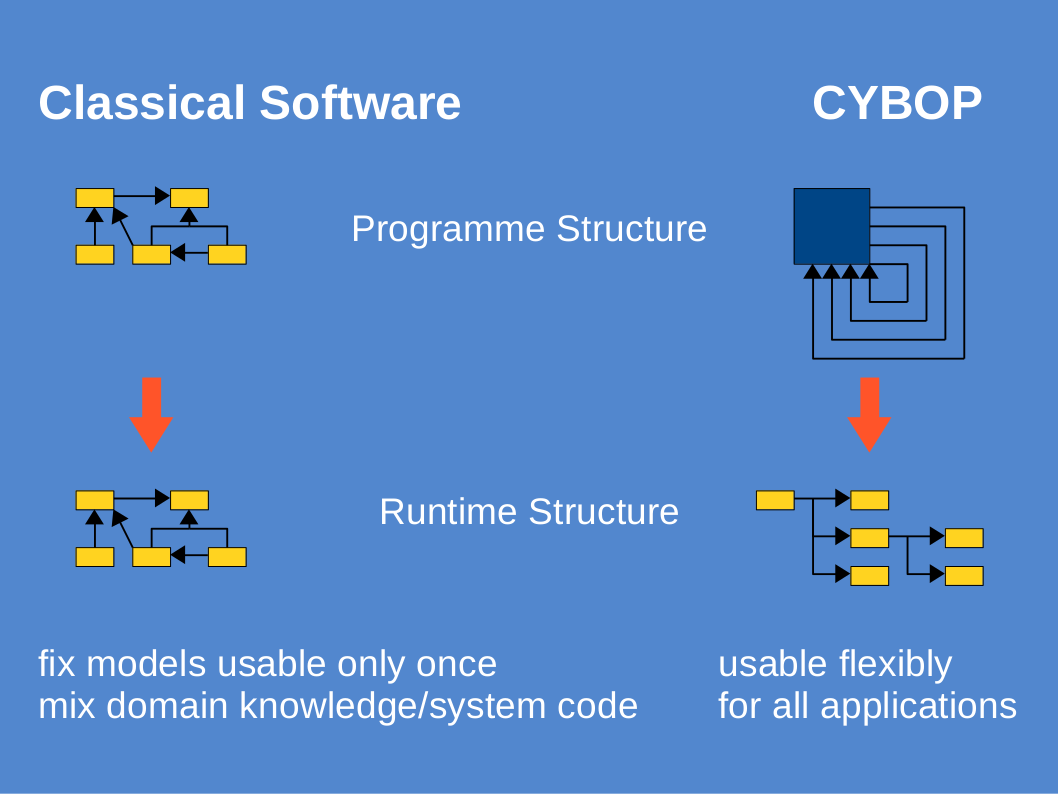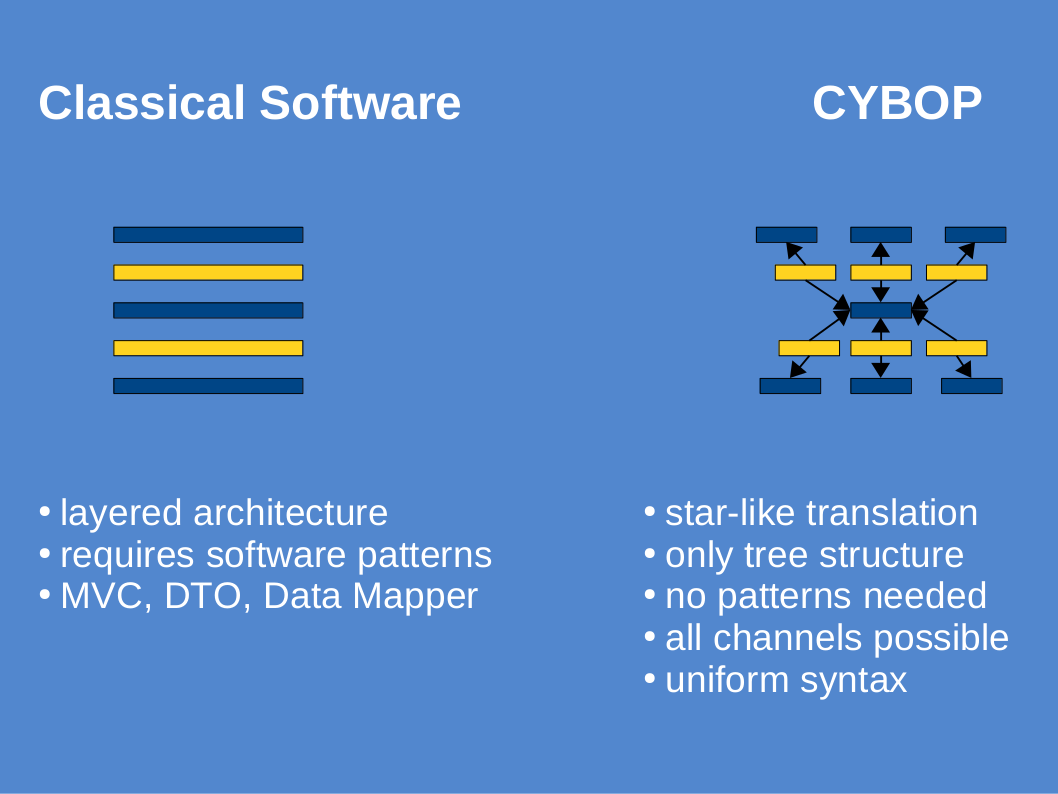MOTIVATION
The enterprise aims at delivering and utilising efficient technologies to drastically simplify software development for customers and shorten development time. As a result, there will be long-life, future-proof, flexible applications with focus on domain knowledge. Specialists and analysers will be able to create concepts that serve as source code and get executed directly as programme. In some places this is called no-code or low-code development.
MISSION
The foundation for this new kind of programming is called Cybernetics Oriented Programming (CYBOP). Its technology is based on a simple tree structure (hierarchy), which makes it possible to considerably reduce complexity.
- An improved accessibility by TREE STRUCTURE eases application programming.
- Non-programmer specialists and analysers may contribute source code via TABULAR EDITOR.
- The effort to develop software gets reduced tremendously due to the CANCELLED design and implementation phases.
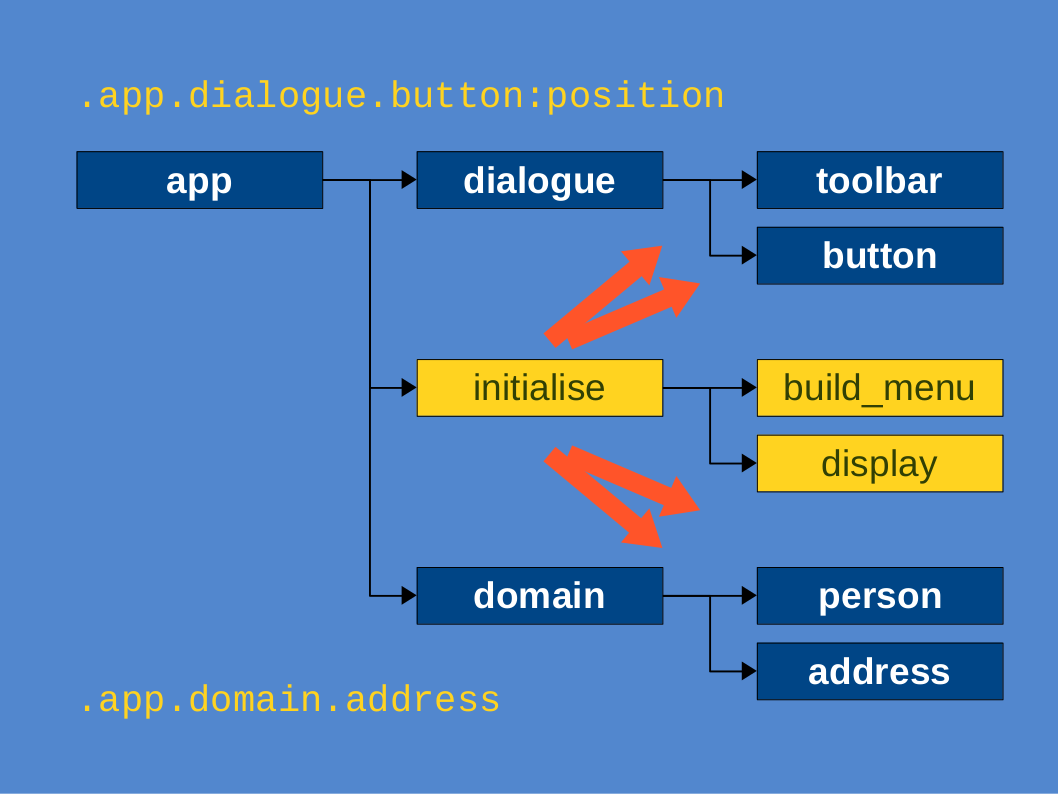
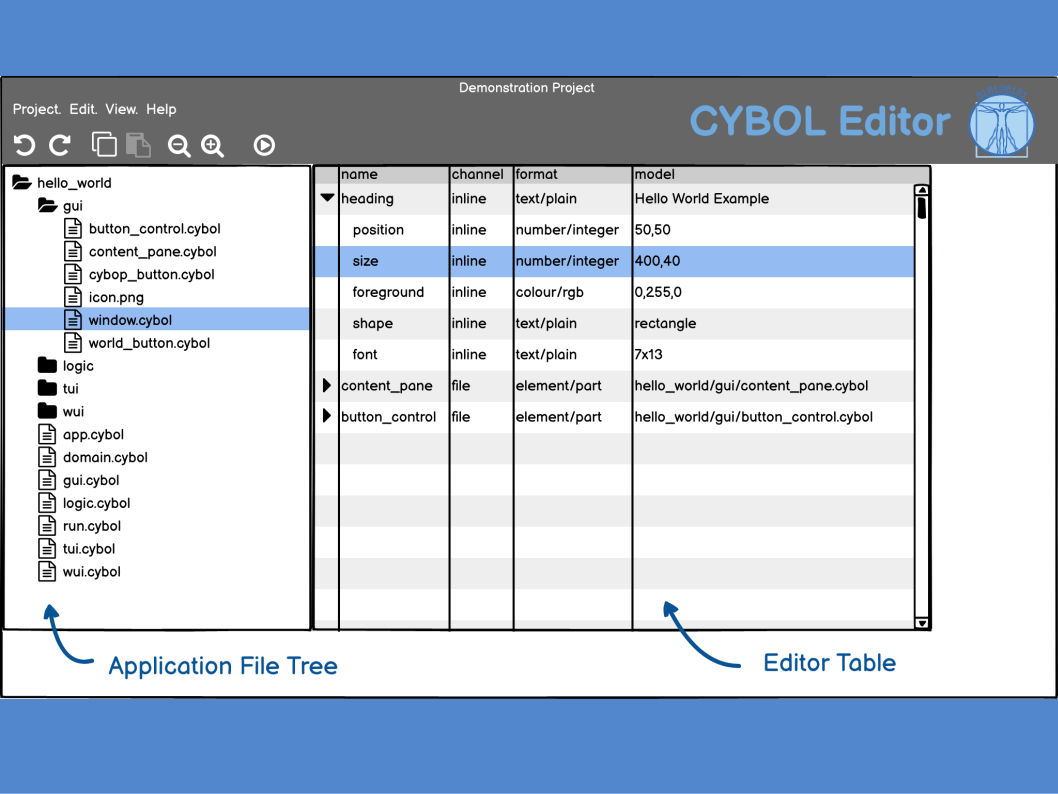
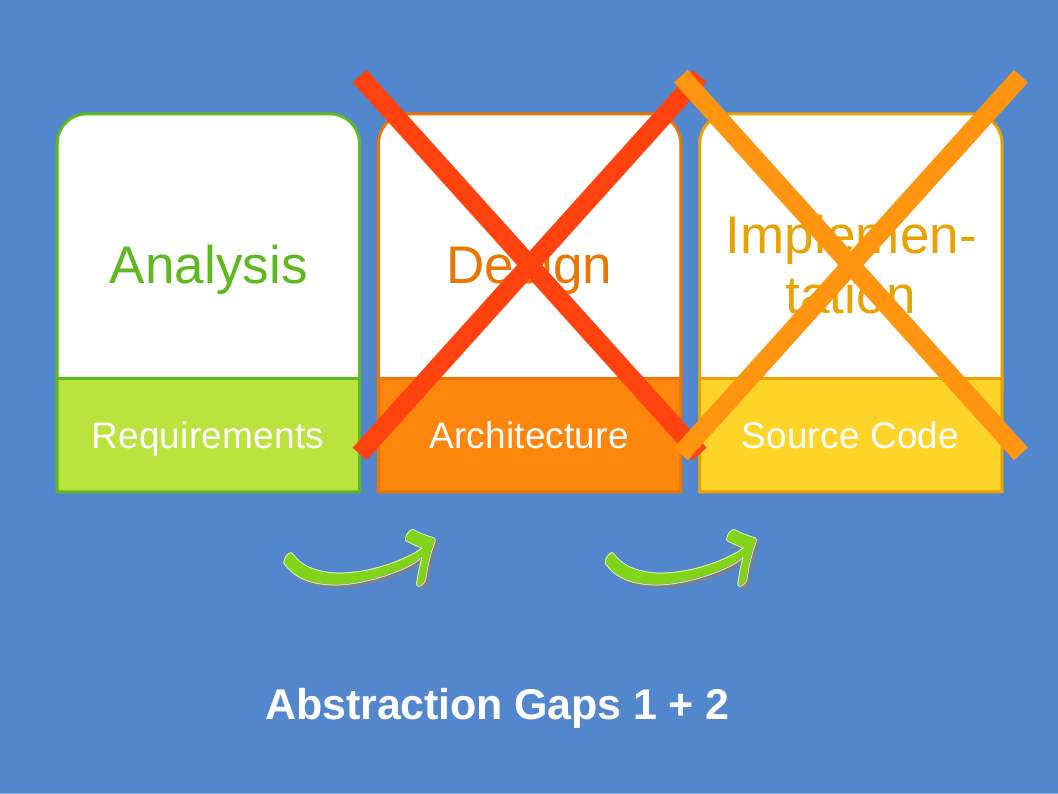
Other than common no-code platforms, CYBOP does not only encapsulate the functionality of classical programming languages, but due to its internal tree structure for all purposes offers a drastically simplified architecture. This is not unlike web development with the difference that the tree structure is applied to other user interfaces as well, and to all kinds of data and functions or algorithms.


